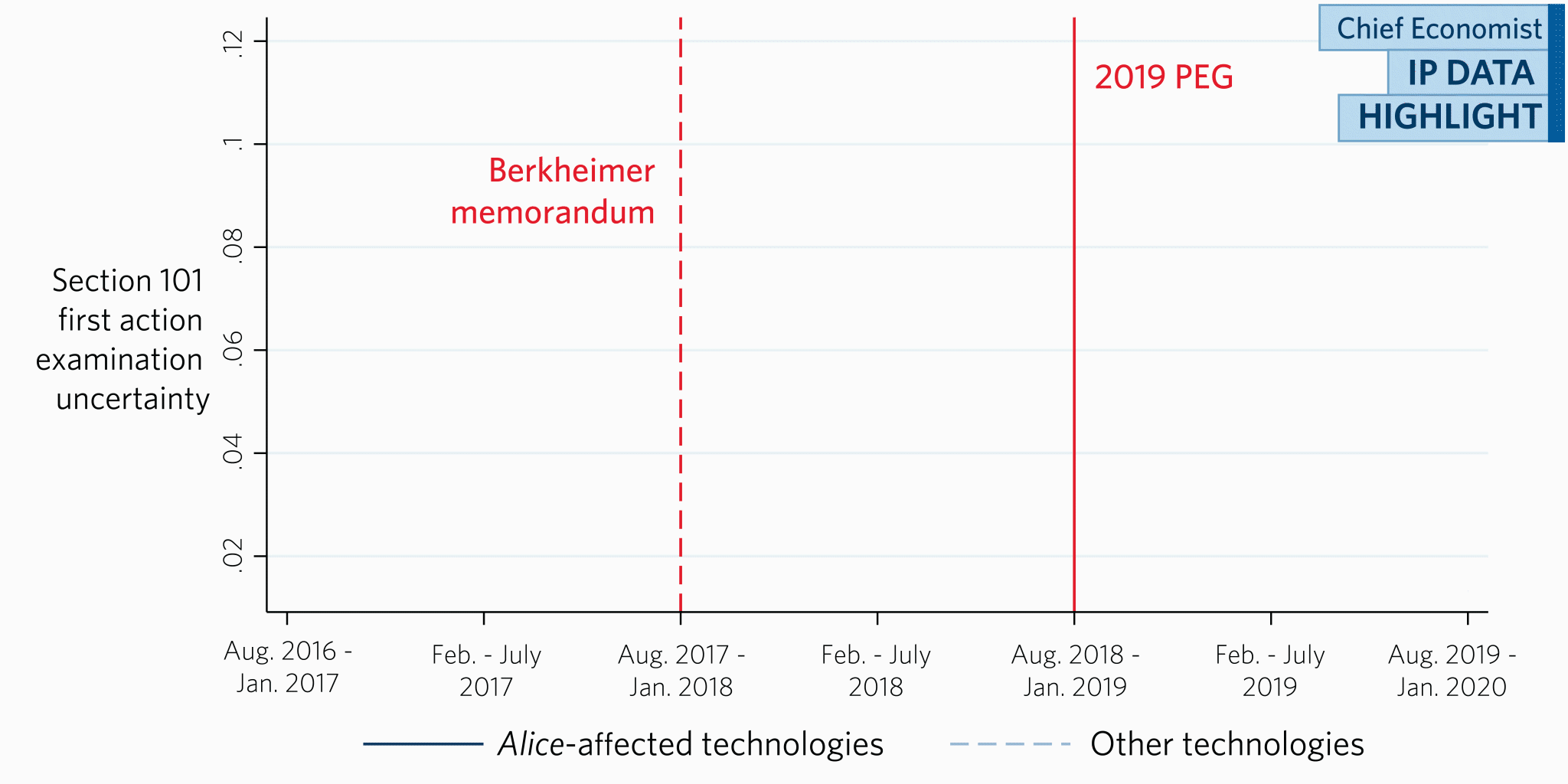Adjusting to Alice: USPTO patent examination outcomes after Alice Corp. v. CLS Bank International
April 2020
IP Data Highlight 3
Read the report
Read the published article
Press release
Supplementary material
On June 19, 2014, the U.S. patent system experienced a major change. The U.S. Supreme Court reached a unanimous decision in Alice Corp v. CLS Bank International (Alice) that altered the law on patent subject matter eligibility (the types of inventions that are legally eligible for patent protection). Although legal changes and subsequent adjustments across the institutions in the patent system are not unusual, Alice deserves particular attention because of its potential economic consequences.
This USPTO report shows that in addition to increasing the percentage of first office action Section 101 rejections, Alice significantly increased uncertainty in the patent examination process. Economic theory and evidence show that greater uncertainty tends to reduce investments. Higher levels of uncertainty may also negatively affect previously issued patents by lowering their expected value, reducing patent purchases and licensing transactions, and limiting opportunities to obtain entrepreneurial financing.

In addition, the report shows that recent USPTO guidance for examiners (the 2018 Berkheimer memorandum and the 2019 Revised Patent Subject Matter Eligibility Guidance (2019 PEG)) largely reversed the impacts of Alice, reducing both the percentage of first office action Section 101 rejections and examination uncertainty. The figure above plots uncertainty in the first action stage of patent prosecution related to determinations of subject matter eligibility, before and after the 2018 Berkheimer memorandum and 2019 PEG. For Alice-affected technologies, the figure shows that the variability in first office action Section 101 rejection rates started to decrease after the issuance of the Berkheimer memorandum (dashed red vertical line). Although not as steep, a similar drop is apparent in the control group of other technologies. The memorandum, therefore, appears to have had no statistically distinct effect on examination uncertainty in Alice-affected technologies as compared to other technologies.
The 2019 PEG, however, had a much larger, statistically significant effect on examination uncertainty, particularly in Alice-affected technologies. As seen by the sharp downward kink in the solid blue line after the 2019 PEG (solid red vertical line), examination uncertainty significantly decreased in Alice-affected technologies (relative to the “Other technologies” control group).
Additional information on the impacts of Alice and subsequent USPTO guidance is available in the OCE report: Adjusting to Alice: USPTO patent examination outcomes after Alice Corp. v. CLS Bank International.

